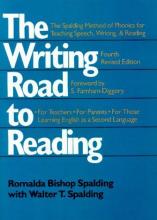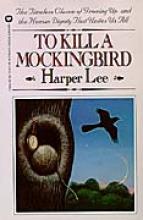No name
The Writing Road To Reading
Just as this book is much more difficult to use thanTeach Your Child To Read In 100 Easy Lessons, it is also more difficult to review. A companion book by Wanda Sanseri, Teaching Reading At Home, organizes the information into a one page flow chart, then expands each item in the flow chart systematically so you feel comfortable with what to teach when. The Riggs Institute also has an extensive web site (www.riggsinst.org) devoted to this and a lot of supplementary materials for the Writing Road To Reading.
WRTR is based on putting the 45 sounds of English into 70 phonograms or ways of spelling the 45 sounds in writing. A simple diacritical marking system is taught. An example of this is the letter a. It is introduced as the sounds of a (short sound), a (long sound), a (ahh sound) (the terms short and long are not used).The first sound of a is the most common so it is not marked, the second sound of a is underlined to show that it is saying the second sound and the third sound of a has a little number 3 written over it. By the way, consonant blends in which each letter still retains it sound are not taught.
The beginning of the program is the hardest. You introduce 4 phonograms each day by showing a flash card of the letter while saying the sound(s) of it. The student says the sound. You show how to write the letter. They are grouped by similar shape so you start with a, c, d, g and o which are formed similarly. There are detailed instructions as to presenting this. Being a "fine-motor-skill-challenged" family this was the most difficult. After three weeks the student should know the first 54 sounds. They then begin a spelling notebook. The words are dictated by the teacher. The students say each phonogram sound or syllable in it, then write each one, then read it. Then they mark it appropriately. After 150 words are presented by this method they then begin reading. They claim that reading is never taught, that after explicit, intensive phonics instruction and the encoding of words by spelling in this manner children are just able to read. They spell their way into reading. My children already read when we started this program so I cannot vouch for that. There are also 29 spelling rules such as the 5 ways silent e's are used in English taught along the way.
Spalding did not want children to be reading twaddle (not her word but appropriate here) but the finest in children's literature. There is a long appendix in the back of recommended books grouped by grade level.
120 pages of the book are devoted to a spelling list which is to be used for grades 1 through 4. Each year a new spelling notebook is begun using a sewn composition notebook. All the phonograms and spelling rules are reviewed by writing them in each year's new notebook. 30 spelling words a week are recommended by Spalding and 20 a week by Sanseri. With my children I use 20 per week. I introduce 5 per day M-Th then have a test on Friday. They are reviewed and practiced by being used in sentences, playing hangman, etc.
Even though my children were already reading when we began the program I feel it was very valuable to give a thorough review of phonics and to apply phonics in the spelling lesson, not in the reading lesson. I plan to continue using it as a long term spelling program. I think the way spelling is taught in this program makes sense. My children's reading continues to improve and we have become comfortable with using it. By the way Spalding says the lessons take 3 hours a day, Sanseri says that in a home situation it takes about an hour per day. So far with both children at 2 different levels entailing 2 separate lessons it has never taken more than 1 hour per day for us. This program was recommended to me very highly by many people and I am glad I took their advice. The key phrase which sums up this complex program is "spell your way into reading."
Copyrights: 1957 revised, 1990.
The Year and Our Children
Originally published in the 1950s, The Year and Our Children has been the gold standard by which all other liturgical year activity books are measured. And now, Sophia Institute Press has brought this beloved gem back into print. Those of us with old dog-eared and grease stained copies, and all those who coveted those well-worn editions, thrill at the news of widespread availability of this treasure. I think I was trembling on the phone when I ordered my new copy.
This new edition is larger and easier to read than the original, and the editors at Sophia Institute Press have removed some of the more outdated information and inserted quite a few helpful footnotes. Mrs. Newland proceeds through the year, beginning at the beginning of the Church’s year in Advent and ending with All Souls and Thanksgiving. For each major feast, she describes family activities, prayers, and traditions and explains the origins of the observation of these feast days. She also explains some of the more mysterious or unknown observances, such as Rogation and ember days, and shows in each case how the family can participate in the observances in the home. I especially appreciate her treatment of All Hallows Eve, reclaiming it as a Catholic holiday.
These are more than just craft ideas or ways to decorate the home for the different holidays (though that is included); these are substantial Christian exercises to make the life of the Church real in our families. So for example, when we decorate the Christmas tree, after spending much time making significant and beautiful ornaments, there is a lovely blessing for the tree: a Psalm prayed as a group alternating lines with a reading from Ezekiel.
While the Christmas and Epiphany sections are among my favorites there are wonderful ideas in every part of the book and much to meditate upon as we move through the year of the Church. One line from the section on Lent has always stuck with me. It is so simple, simple enough for children, and yet deep enough to reflect upon all of Lent: For Him to redeem us was not an easy thing. Jesus hurt.
This book would be a thoughtful and much appreciated gift for any family who wants to enhance their participation in the year of the Church and create traditions their children will love. It would be kept for years . . . and become a well loved, dog-eared, and grease stained treasure.
The Young Life of Mother Teresa of Calcutta
The Young Life of Pope John Paul II
This short chapter book on the life of Pope John Paul II focuses on his childhood and upbringing in Poland. He had a difficult childhood, losing his mother when he was only a boy and his only brother and his father when he was only a young man. We see him draw closer to God during these troubles and eventually discover his vocation to the priesthood during the terrible days of World War II. The story also decribes some of the happier and even humorous moments of his childhood and children will see that in many ways he was an "ordinary" boy destined for unordinary things. Mrs. Mohan is not a great writer, but those weaknesses are compensated for by the greatness of "the story" itself. The text is illustrated with pen and ink drawings (again, somewhat on the mediocre side). The appendix includes a timeline of the Holy Father's life, some quotations by and about the Pope, a somewhat complex map of Poland, a glossary and an index. There is a list entitled "Further Reading". Some of these titles, while perhaps having some informational value in researching a book on the Pope, should not be considered recommended reading, especially for children. (One of the titles was written by Andrew Greeley who might readily be described as a pseudo-Catholic). Also, since the writing of this book there are more good comprehensive resources available about the Holy Father's life, such as Witness to Hope by George Wiegel.









